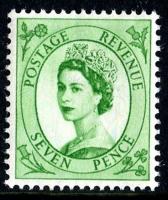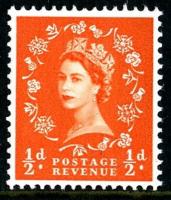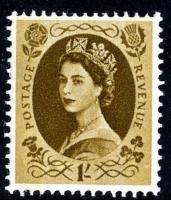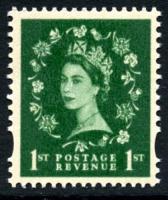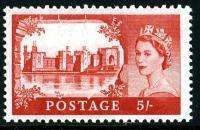GB Wildings
The GB Wilding Definitive stamps are a set of postage stamps issued by Great Britain between 1952 and 1971, before being replaced with Pre-Decimal Machins. The stamps feature a portrait of Queen Elizabeth II and were designed by Edmund Dulac, a renowned British stamp designer. The name "Wilding" comes from the engraver's name, Dorothy Wilding, who created the original portrait used in the stamp design.
The GB Wilding Definitives were introduced as a replacement for the King George VI series, and they were the first British stamps to feature Queen Elizabeth II after her accession to the throne in 1952. Other "firsts" attributed to Wildings includes the first issue to feature graphite lines on the reverse, and the first with phosphor bands on the front.
The Wilding Definitives series includes several different designs, each with a unique value, color, and perforation. The stamps were used for everyday mail, and their design changed several times over the years to reflect changes in postal rates.
One of the most notable features of the Wilding Definitives is their intricate design, which features a detailed portrait of Queen Elizabeth II, along with a delicate frame and intricate background elements. A series of high value "Castles" were also issued, featuring the Wilding design next to a British castle.
The stamps were printed using a combination of photogravure and recess methods, which gave them a high level of detail and definition. There were three different watermarks used on the Wildings Definitives: Tudor Crown (153), St Edward's Crown (165) and Multiple Crowns (179). Wilding designs with decimal face values were issued on multiple occasions in 1998, 2002, 2003, 2011 and 2012.
Today, the GB Wilding Definitives remain a popular collectible among philatelists and stamp enthusiasts. The series includes many rare and valuable stamps, and the intricate design and historical significance of the Wilding Definitives make them a must-have for any serious collector.
Return to: All Categories


